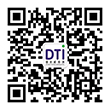Large household appliances EU RoHS testing full process guide
Date:2025-02-13 09:55:03 Classification
:【question】 Visits:
RoHS is the "Directive on the Restriction of the Use of Certain Hazardous Substances in Electrical and Electronic Equipment" adopted by the European Union in 2003, which aims to reduce the harm of electronic products to the environment and human health. The directive has been enforced since July 1, 2006. The latest revised version (RoHS 2.0) included four phthalates in 2015, and the number of controlled substances has been expanded to 10.
1. Testing scope and core requirements
Applicable products: household appliances such as refrigerators, washing machines, air conditioners, microwave ovens, etc. that need to be connected to the EU market
Testing standards: RoHS 2.0 (2011/65/EU) ten hazardous substances restrictions
Limit requirements:
- Lead (Pb), mercury (Hg), hexavalent chromium (Cr⁶⁺), etc.: ≤0.1% (homogeneous material)
- Cadmium (Cd): ≤0.01%
- Phthalates (DEHP/DBP/BBP/DIBP): ≤0.1%
2. Testing process (6 steps in detail)
1. Material pre-examination and disassembly preparation
- Disassembly requirements: The product needs to be disassembled into homogeneous materials (such as plastic housing, metal bracket, circuit board solder, etc.)
- High-risk components:
- Compressor (lead, cadmium risk)
- Circuit board (lead solder, brominated flame retardant)
- Insulation material (polybrominated diphenyl ether)
2. Select a certification body
- Qualification requirements: EU-accredited laboratory (such as Dezewei)
3. Sample submission and test application
- Sample requirements:
- At least 3 complete machines of the same model (or equivalent disassembled parts)
- Provide a complete bill of materials (BOM) (including supplier information)
- Document submission:
- Product technical specifications
- Electrical schematics (marking high-risk parts)
4. Laboratory testing stage
- Preliminary screening test:
- Rapid screening of heavy metals using X-ray fluorescence spectrometer (XRF)
- Precise chemical analysis:
- Gas chromatography-mass spectrometry (GC-MS): Detection of polybrominated diphenyl ethers
- Inductively coupled plasma (ICP): Quantification of heavy metals such as lead and cadmium
- Special project testing:
- Hexavalent chromium needs to be verified by colorimetry
5. Report review and rectification
- Disqualified handling:
- If a material exceeds the standard (such as 0.12% lead content in plastic parts), the supplier needs to be changed or the process needs to be adjusted
- Retesting is only for unqualified items (the cost is borne by the company)
- Report content:
- Testing method (such as IEC 62321)
- Comparison between the measured value and the limit value of each material
6. Certificate issuance and compliance marking
- Certificate validity period: no fixed period, but material/design changes require retesting
- CE marking: "RoHS Compliant" must be marked on the nameplate, packaging and instructions




 Shen Gongwang Security: 44030602006947
Shen Gongwang Security: 44030602006947